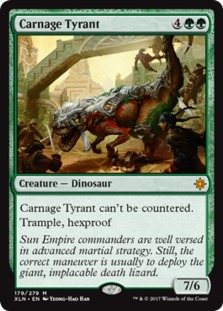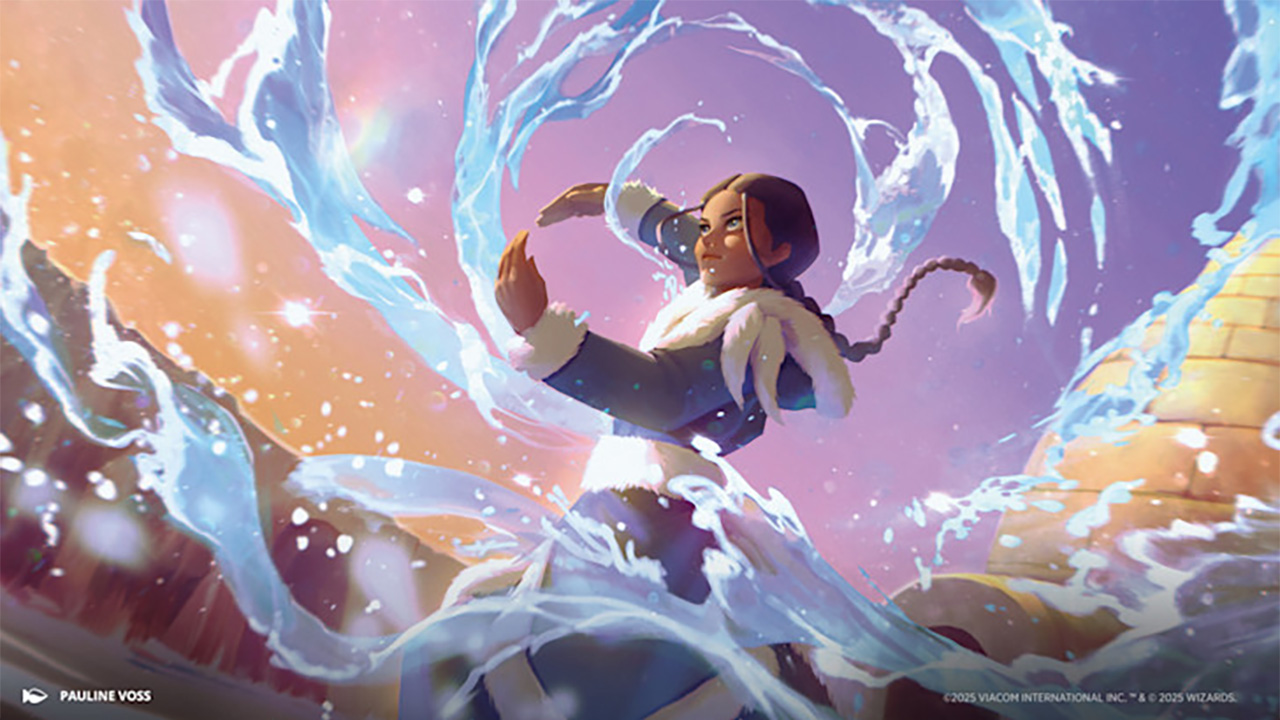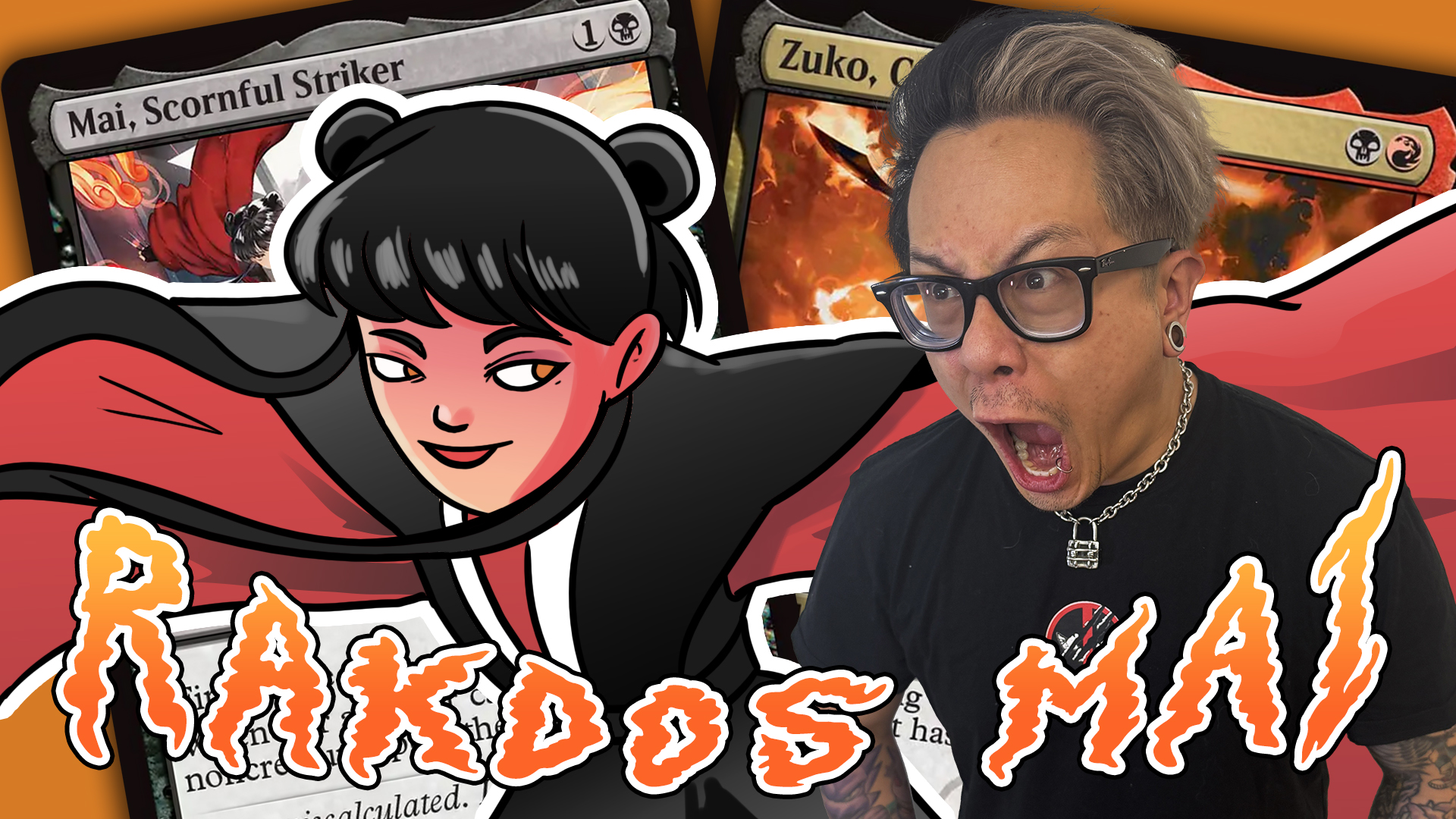Budget Magic: $73 Standard Bogles (Standard, Magic Arena)
Bondjoû, Budget Magic lovers, it's that time once again! This week, we're delving again into Core Set 2020 Standard, this time to play one of my most hated Modern archetypes: Bogles! If you're somehow not familiar with Bogles, the deck basically looks to stick a hexproof creature, load it up with enchantments, and use it to kill the opponent with a few big attacks. Thanks to Core Set 2020, we now have some interesting pieces to build a similar deck in Standard, with Season of Growth providing an insane card-advantage engine and Barkhide Troll offering a solid pseudo-hexproof option to load up with enchantments. Add in holdovers like Vine Mare, Prodigious Growth, and the now-budget-friendly Carnage Tyrant, and you have the recipe for a really annoying (and potentially powerful) budget deck for Core Set 2020 Standard. Can Season of Growth support a Bogles-esque deck in Standard on a budget? Let's get to the video and find out! Then, we'll talk more about the deck!
First, a quick reminder: if you enjoy the Budget Magic series and the other video content on MTGGoldfish, make sure to subscribe to the MTGGoldfish YouTube channel to keep up on all the latest and greatest.
Budget Magic: Standard Bogles

The Deck
Standard Bogles is basically a unique, hexproof, and aura-heavy take on mono-green aggro. Rather than playing the most efficient green creatures possible, the goal of the deck is to play the hardest-to-interact-with green creatures in the format, load them up with some strong power-boosting enchantments, and then ride a big threat or two to victory before our opponent manages to draw an edict or wrath to disrupt our plan. Probably the easiest way to break down the deck is to start with our Bogles, move on to our auras, and then finish things up by discussing our utility cards.
Bogles


Wizards has learned over the years that printing cheap hexproof creatures often leads to unfair and unfun games, so our first Bogles are really more of pseudo-Bogles since they only have hexproof some of the time. Paradise Druid does double duty in our deck, ramping us into our powerful midrange threats while also having hexproof as long as it is untapped. While loading up a Paradise Druid with enchantments can be risky, it plays very well on defense. And if we are careful about when we attack with it, it is a good way to get in a big attack every now and then.
As for Barkhide Troll, the card is just good. A 3/3 for two is already solid stats in a green beatdown deck, and the ability to give itself hexproof one time by removing a counter is key. Sometimes, we just play a Barkhide Troll on Turn 2, play a Blanchwood Armor on Turn 3, and go to town with a massive threat before our opponent gets a chance to recover. It's also worth mentioning that one of our key support cards is Vivien, Arkbow Ranger, which works really well with Barkhide Troll since it can add additional +1/+1 counters. If we can get multiple counters on Barkhide Troll, it essentially becomes a real Bogle since we can make it hexproof every turn if necessary, as long as we are willing to leave up a mana to activate the two-drop.


Further up our curve are Vine Mare and Carnage Tyrant, which are true Bogles, being hexproof all of the time with no extra work necessary. While being four and six mana can be annoying, having Paradise Druid and Llanowar Elves helps us quickly ramp into our top-end Bogles. Once they are on the battlefield, Vine Mare and Carnage Tyrant are our best creatures to load up with auras since they are basically unkillable outside of edits (which are rare in Standard) and wraths (which are also not that heavily played).
Both of our true Bogles also come with some additional upside. Vine Mare can't be blocked by black creatures, which might not sound like much but occasionally steals wins out of nowhere against decks like Vampires that are overloaded with black blockers. Meanwhile, Carnage Tyrant comes with trample, making it basically unchumpable. While we have some ways to give our other Bogles trample as well, Carnage Tyrant is our best creature to load up with Blanchwood Armors since it doesn't need any extra help to become lethal very quickly.

Llanowar Elves isn't really a Bogle, but as the last creature in our deck, we might as well talk about it here so we don't have to wrap back around to creatures later. One of the odd parts of Standard Bogles is that a lot of our best hexproof creatures and auras are somewhat expensive. Llanowar Elves helps us ramp into the Carnage Tyrants and Prodigious Growths of the world. Ideally, we won't have to target Llanowar Elves with our auras since it doesn't have any sort of protection at all, but in a pinch (or in the right matchup), there are times when turning a Llanowar Elves into a huge attacker with Blanchwood Armor or Prodigious Growth can be a game-winning line.
Auras


When it comes to turning our hexproof creatures into massive threats, our primary plan is auras. For this, we have Blanchwood Armor and Prodigious Growth. Blanchwood Armor is extremely strong in our all-Forest-mana-base deck, typically adding +3/+3 immediately and scaling throughout the game as we make our land drops. Meanwhile, Prodigious Growth is expensive but turns pretty much any of our hexproof creatures into threats that can kill our opponent in just a couple of attacks on most board states. While the main calling card is +7/+7, the fact that Prodigious Growth gives trample is also very important, making it so Barkhide Troll or Vine Mare can't just be chump-blocked forever by our opponent's worst creatures.
Other Payoffs

Season of Growth was the reason I decided to build Standard Bogles in the first place. The enchantment is a great engine for a deck that's looking to target its own creatures with spells, essentially giving our Blanchwood Armor, Prodigious Growth, and Thrash // Threat a kicker of drawing us a card. Since Season of Growth is only two mana, it only takes a couple of cards being drawn to make it worth the investment. And this doesn't even consider the upside of scrying when we play our creatures, which sort of adds up to even more cards being drawn as we can filter through extra lands to find more threats and payoffs. All in all, we have 12 cards that trigger the "draw a card" mode of Season of Growth, which means the enchantment provides our green deck with a solid source of card advantage. It gets crazier if we ever end up with multiples on the battlefield, allowing us to draw through our deck with ease as we load up our Bogles with auras.


Rounding out our deck are Thrash // Threat and Vivien, Arkbow Ranger. At level one, both of these cards work as removal spells by allowing one of our creatures to deal damage equal to its power to one of our opponent's creatures or planeswalkers. Since most of our creatures are hexproof and end up massive thanks to our auras, this typically ends up being hard removal for anything our opponent might have on the battlefield. While killing opposing creatures is great, being able to kill planeswalkers is also very important since our current Standard format is overflowing with the card type, with almost all of the best decks in Standard having some number of planeswalkers.
Both Thrash // Threat and especially Vivien, Arkbow Ranger come with additional upsides. As a spell, Thrash // Threat is an additional way to trigger Season of Growth and draw cards, and while it doesn't happen often, we can technically cast the Threat side in a pinch, with the help of Paradise Druid making red mana. Meanwhile, Vivien, Arkbow Ranger might be the most powerful card in our entire deck. While the removal of her −3 is great, the +1 of adding two counters and giving creatures trample is a great backup way to grow our hexproof creatures into massive threats and force damage through blockers, and the +1/+1 counters are a great way to support Barkhide Troll's activated ability. Meanwhile, Vivien's −5 gives us a way to snag some powerful silver-bullet creatures from our sideboard when the situation is right. Here's a shortlist of sideboard tutor targets and their purpose.



- Healer of the Glade gains life against Mono-Red and other aggro decks.
- Kraul Harpooner offers a way to kill big fliers like Lyra Dawnbringer and Rekindling Phoenix.
- Deathgorge Scavenger provides more lifegain against Mono-Red and other aggro decks while also offering graveyard hate against Izzet Phoenix, Command the Dreadhorde, and other graveyard-centric archetypes.
- Thrashing Brontodon deals with artifacts and enchantments like The Immortal Sun, Wilderness Reclamation, and Search for Azcanta.
- Shifting Ceratops is insane against Mono-Blue (which is on the rise) and also against various blue-based control decks.
- Gargos, Vicious Watcher is hilarious against creature decks if we get enough mana to cast it, turning all of our auras into fight spells to sweep away our opponent's board.
Wrap-Up
All in all, we finished our video matches 3-2 with Standard Bogles, which is a pretty reasonable result for a budget deck, although I have no idea what my overall record is with the deck. I spend a lot of time building and testing different builds (Simic Bogles for more cheap auras and hexproof creatures, Selesnya Bogles for Satyr Enchanter). But in the end, mono-green seemed like the best budget option, mostly because the mana bases for the two-color builds are so expensive, making it hard to play cards like Carnage Tyrant and Vivien, Arkbow Ranger (two of the most powerful cards in our deck) while also staying under budget. While I think the two- (or even three-) color builds have potential in non-budget form, good ol' mono-green seems like a solid budget starting point for the Standard Bogles archetype.
As far as changes to make to the budget build of the deck, I'm not sure there's really much to be done. In general, we already have the best hexproof creatures and auras available. That said, there might be some argument to trying to lower the curve. One of the downsides of the deck is that we have a weird duality where we are trying to be aggressive but also trying to cast six-mana spells, which leads to some weird deck-building choices where we have to play cards like Llanowar Elves even though they aren't optimal for the aggro / beatdown plan. It is possible to build a lower-curve version of the deck by dropping Carnage Tyrant and Prodigious Growth for cards like Oakenform and maybe something like Druid of Horns, which would probably support Season of Growth even better but likely lower the power level of the deck overall. That said, it might be worth testing more, at the very least.
All in all, Standard Bogles felt like a fun budget option. While we did get randomly blown out by things like Assassin's Trophy in some games, in general, most decks didn't have a good way to interact with our plan, and even our losses were mostly close games that we were a card or two away from winning. If you enjoy Modern Bogles or just want to frustrate some Standard opponents over the summer by playing one of the most reviled archetypes in Magic, give Standard Bogles a shot!

Getting Standard Bogles down in the ultra-budget range is pretty easy: we drop Carnage Tyrant and replace it with two copies of Oakenform while cutting down to two copies of Shifting Ceratops in the sideboard for an additional copy of Gargos, Vicious Watcher and another Healer of the Glade. While losing Carnage Tyrant is annoying, especially against counterspell-heavy decks, having additional auras makes our Season of Growth even better. And in theory, the extra cards we draw from our enchantment will help against control, minimizing the loss. In reality, the ultra-budget version of Bogles doesn't seem like a major step down from the build we played in the videos, so it seems like a fine option if you're looking to play the deck as cheaply as possible over the summer.

Our non-budget build this week splashes into blue for some interesting additions. While it takes some work to get 10 permanents on the battlefield, Slippery Scoundrel is the best Bogle in the format after we get the city's blessing, being not just hexproof but unblockable as well. Meanwhile, Arcane Flight and Curious Obsession offer cheaper auras to trigger Season of Growth, while Arcane Flight also gives us some additional evasion. Finally, the other big upside of splashing into blue is the additional sideboard options. While we still have a bunch of creatures to tutor up with Vivien, Arkbow Ranger, we also have Aether Gust, Spell Pierce, and Negate as counters to help protect our Bogles as well as Cerulean Drake, which is a great option against Mono-Red specifically. All in all, the non-budget build represents an upgrade and isn't actually that expensive, coming in at only $133 in paper and 25 tix on Magic Online, with most of this cost being tied up in a $60 playset of Breeding Pool and $25 worth of Hinterland Harbors to make the mana work.
Conclusion
Anyway, that's all for today. As always, leave your thoughts, ideas, opinions, and suggestions in the comments, and you can reach me on Twitter @SaffronOlive or at SaffronOlive@MTGGoldfish.com.













